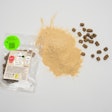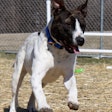
Health-focused formulations of dog, cat and other pet foods were already an important part of the market before the onset of the lingering pandemic. A few years of disease paranoia added steam to health and wellness trends in both human and pet food. Yet, along with fearing pathogens, pet owners increasingly appreciate the beneficial microbes that live in and on animals’ bodies. Scientists have observed how food influences dogs’ intestinal microbiomes, but the effects of diet and nutrition on dogs’ other microbial communities largely remain unexplored. For example, a dog’s largest organ and first barrier against infection and injury, the skin, hosts a range of bacteria, fungi and other organisms. Scientists have questions about how diet and nutrition interact with dogs’ skin microbiomes. At the same time, skin and coat formulations remain among the most popular health claims made by therapeutic and prescription pet foods.
“Skin health is an important area of interest as it literally impacts many pets and pet parents,” Gerardo Perez-Camargo, vice president of R&D for refrigerated fresh dog food maker Freshpet, told Petfood Industry in an email. “Although diet has been used to help manage several skin conditions, the nutritional approaches have mainly been through the restriction of allergens or through the provision of nutrients (fatty acids, minerals or vitamins) that target the skin. However, we believe that using a diet to manipulate the skin microflora is a novel nutritional approach. Several skin diseases are associated with alterations in the skin microbiome. It might be clear if the changes in skin microbiome are the cause of the consequence of the disease. However, if we can affect the skin microbiome with the diet, that could provide us with another tool to help manage the condition or its symptoms. If we could find a way to use dietary interventions to either restore microbiome or prevent changes, it could open a new path to leverage nutrition to sustain skin health.”
Perez-Camargo collaborated with academic and industry researchers to compare how kibble versus fresh dog food influences dogs’ skin microbiomes.
“There have been a significant number of studies that have clearly established a direct impact of nutritional fibers on the gut microbiome,” Gerardo Perez-Camargo, study author and vice president of R&D for refrigerated fresh dog food maker Freshpet, told Petfood Industry in an email. “To our knowledge, this is the first study showing an impact of the diet on skin microflora.”
The journal Animals published the team’s results in the paper, “Fresh Food Consumption Increases Microbiome Diversity and Promotes Changes in Bacteria Composition on the Skin of Pet Dogs Compared to Dry Foods.”
Research on dog foods’ influence on skin microbiome
In the study, eight dogs with no previous skin disorders received a fresh diet for 30 days in their homes. The researchers collected samples of their dogs’ skin microbial communities and determined which species lived on the dogs. After a four-day transition period, dog owners then switched to dry kibble for another 30 days. The scientists again collected skin microbiome samples. Microbe diversity was higher after the first 30-day period following the fresh diet compared to microbiome diversity after the kibble. Among those microbes, the proportion of Staphylococcus was higher, while Porphyromonas and Corynebacterium were lower on the skin of dogs after eating the fresh diet.
“No visible differences were appreciated on the dog’s skin, other than the changes in skin microflora,” Perez-Camargo said.
Details about how these changes may benefit the dogs remain for further study. Since the dogs’ skins and coats were healthy at the outset, the researchers have no data on how diet may affect skin diseases associated with microflora imbalances, he said.
“So far the evidence supports that this fresh diet containing prebiotics can increase skin microbiome diversity,” he said. “Microbiome diversity is associated with resistance shifts in microbial populations and stability… Although at this point we do not fully understand the mechanisms that connect the diet and the skin microflora, we hope that more research helps grow knowledge in the field. In a similar way that the gut-brain axis is under exploration, we believe that there is also an opportunity to explore the gut-skin axis.”

















